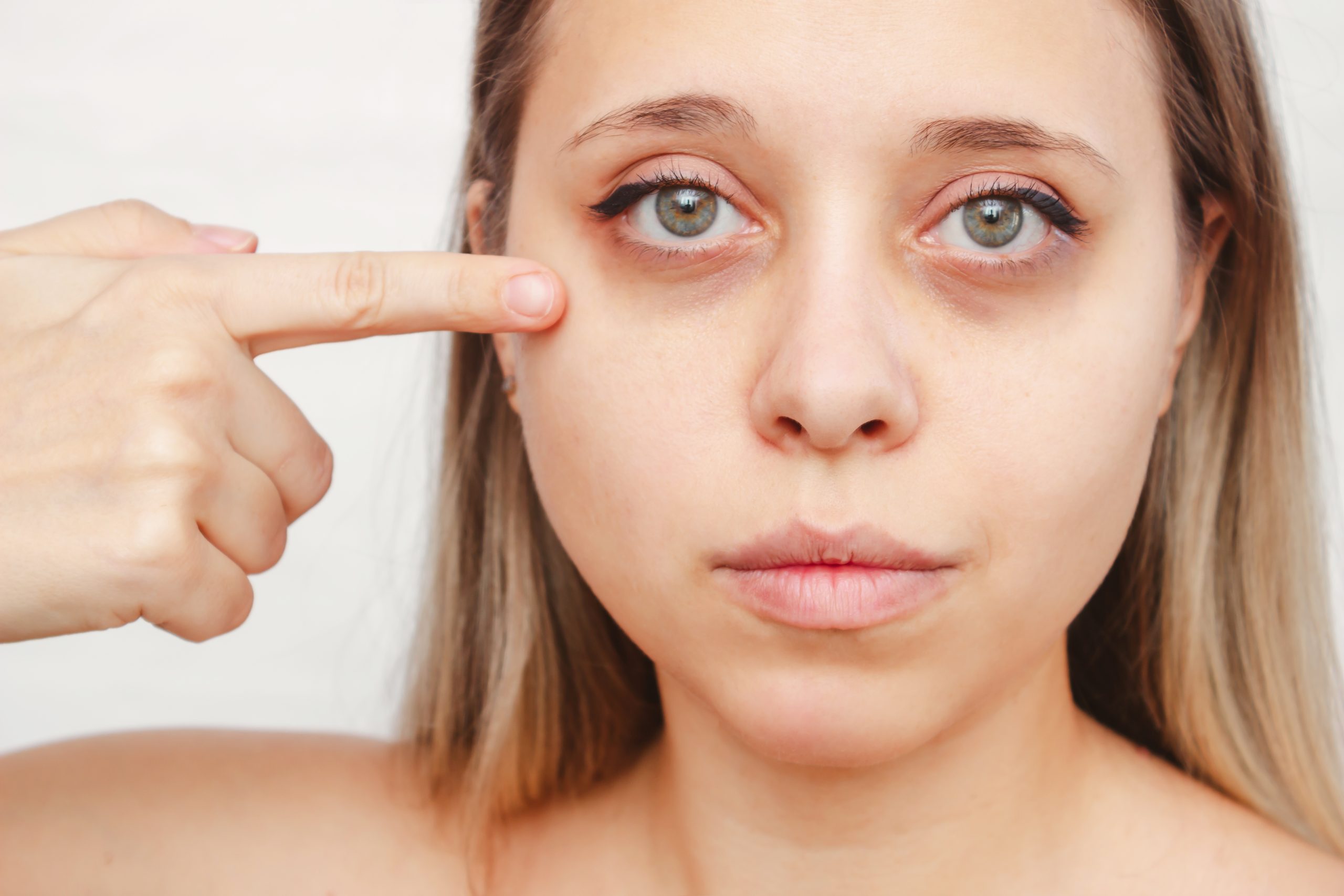Are your eyes feeling irritated and looking a little yellowish? Remember, an ounce of prevention is worth a pound of cure! It’s time to learn about pinguecula, a common eye condition that can affect you as you age. In this article, we’ll explore the causes, symptoms, and treatment options available for pinguecula, focusing on promoting your eye health. Pinguecula is a harmless growth on the white part of your eye caused by long-term sun exposure. While it doesn’t usually cause pain, you might experience dryness or itching. Luckily, there are various treatment options, from lubricating eye drops to surgery, that can help alleviate symptoms and keep your eyes healthy. Let’s dive in and take care of those peepers!
Prevention and Protection Measures
To protect your eyes from potential harm, it is important to take preventive measures. Eye protection is crucial in maintaining good eye health. One of the most effective ways to protect your eyes is by wearing sunglasses. Sunglasses provide numerous benefits, including shielding your eyes from harmful UV light, reducing the risk of cataracts and macular degeneration, and decreasing eye strain caused by bright sunlight. Additionally, wearing glasses or goggles in environments with dust or debris can prevent particles from entering and causing irritation or injury to your eyes. Another preventive measure is the use of artificial tears. These lubricating eye drops can help prevent dry eyes, a common condition that can cause discomfort, redness, and blurry vision. By using artificial tears regularly, you can keep your eyes moist and reduce the risk of developing dry eye syndrome. Taking these preventive measures can significantly contribute to maintaining your eye health and preventing potential eye problems in the future.
Symptoms and Severity of Pinguecula
The severity of pinguecula symptoms can vary from mild to severe. Common symptoms of pinguecula include redness, swelling, a yellow spot or bump on the eye, dry and itchy eyes, and blurry vision. These symptoms can cause discomfort and affect your overall eye health. It is important to take preventive measures to reduce the risk of developing pinguecula and manage its symptoms. Wearing sunglasses to protect your eyes from UV light, using glasses or goggles to shield your eyes from dust, and using artificial tears for dry eyes are some effective prevention methods. To diagnose pinguecula, an ophthalmologist can perform a normal eye exam using a slit lamp. Treatment for pinguecula is usually not necessary if there are no discomforting symptoms. However, if symptoms persist, over-the-counter eye ointments or lubricating drops can provide relief. In some cases, short courses of steroid eye drops may be prescribed. Surgery or laser removal may be considered if the pinguecula becomes too uncomfortable, affects vision, or for cosmetic reasons. It is important to consult with an ophthalmologist for proper diagnosis and management of pinguecula.
Pinguecula Treatment Options
If you are experiencing discomfort or persistent symptoms from pinguecula, there are several treatment options available to promote eye health. Here are some options to consider:
- Surgical Options:
- In rare cases where pinguecula causes significant symptoms or affects vision, surgical removal may be considered. This procedure is typically performed by an ophthalmologist and involves removing the growth from the conjunctiva.
- Another surgical option is pterygium excision, which is recommended when pinguecula progresses to a pterygium, a triangular fibrovascular growth that extends onto the cornea. Surgical excision can help prevent further complications and improve visual function.
- Alternative Remedies:
- Some individuals find relief from pinguecula symptoms by using alternative remedies such as applying warm compresses to the affected area to reduce inflammation and soothe irritation. However, it’s important to consult with an eye care professional before trying any alternative treatments.
- Preventive Measures and Home Care:
- To prevent the development or progression of pinguecula, it’s crucial to protect your eyes from harmful UV light by wearing sunglasses with UV protection and a wide-brimmed hat when outdoors.
- Keeping your eyes lubricated with artificial tears can also help alleviate dryness and discomfort associated with pinguecula.
- Medical Interventions:
- In cases where pinguecula causes redness and swelling, your eye care provider may prescribe steroid eye drops to reduce inflammation and alleviate symptoms.
- Regular eye exams and follow-up appointments with an ophthalmologist are essential for monitoring the progression of pinguecula and determining the need for further medical interventions.
Remember to consult with an eye care professional to discuss the best treatment options for your specific situation.
Pterygium Treatment Options
Consider surgical excision as a treatment option for pterygium if it causes significant symptoms or affects vision. Pterygium surgery involves removing the abnormal tissue growth on the conjunctiva, which can help alleviate discomfort and improve vision. Surgery is typically recommended when the pterygium is large, causing irritation, redness, and swelling. During the procedure, the surgeon removes the pterygium and may also transplant normal tissue to reduce the risk of regrowth.
Prevention plays a crucial role in managing pterygium. Protecting your eyes from sunlight, dryness, and dust can help prevent the development or recurrence of pterygium. Wearing sunglasses with UV protection, using artificial tears for dry eyes, and wearing glasses or goggles in dusty environments are all preventive measures you can take.
It is important to note that pterygium surgery, like any surgical procedure, carries potential complications. These may include infection, bleeding, scarring, and changes in vision. However, with careful evaluation and skilled surgical techniques, the risks can be minimized.
If you are experiencing discomfort or notice a pterygium that is affecting your vision, consult with an ophthalmologist to discuss the best treatment options for your specific case. They can provide guidance on whether surgery is necessary and ensure that you receive appropriate care to promote your eye health.
EyeSmart Newsletter and Finding an Ophthalmologist
Stay updated on the latest eye health advancements and find qualified eye care professionals near you through the EyeSmart Newsletter and its search function. The EyeSmart Newsletter provides ophthalmologist-reviewed tips and information to help you maintain optimal eye health. By subscribing to the newsletter, you can stay informed about the latest eye care advancements, preventive measures, and eye health tips.
Finding an ophthalmologist is made easy with the EyeSmart Newsletter’s search function. Simply enter your location, and you will be provided with a list of qualified eye care professionals in your area. These ophthalmologists are trained in diagnosing and treating various eye conditions, including pinguecula. They can provide you with expert recommendations and guide you through the treatment process.
When it comes to your eye health, it is crucial to seek care from qualified professionals. Ophthalmologists are medical doctors specializing in eye care. They have undergone extensive training and are equipped with the knowledge and skills to diagnose and treat a wide range of eye conditions.
Don’t compromise on your eye health. Subscribe to the EyeSmart Newsletter and connect with qualified eye care professionals to ensure that you receive the best possible care for your eyes.
Overview and Definition of Pinguecula
When discussing the overview and definition of pinguecula, it is important to understand that it is a common degeneration of the conjunctiva that appears as a grey white-yellow mass on the bulbar conjunctiva. Pinguecula is a yellowish, elevated conjunctival lesion that is commonly located on the nasal or temporal bulbar conjunctiva. It is composed of elastotic degeneration of collagen fibers and is frequently associated with exposure to ultraviolet (UV) radiation. Risk factors for pinguecula include exposure to wind, dust, ultraviolet light, trauma, sand, and working outdoors. Contact lens wear is also a risk factor for its development. Pinguecula can cause symptoms such as irritation, foreign body sensation, and dryness of the eyes. In rare cases, complications such as pingueculitis and pinguecula-related dry eye disease can occur. Diagnosis is usually based on clinical examination, patient history, and ophthalmic imaging. Treatment options include protecting the eyes from UV light, wind, and dust, using artificial tears for mild symptoms, and considering surgical excision or argon laser photocoagulation for cosmetic purposes. Regular use of lubricating eye drops and UV protection can help prevent pinguecula. Overall, the prognosis for pinguecula is good, with most cases being benign and not requiring treatment.
Symptoms and Causes of Pinguecula
You may experience symptoms such as a small yellowish patch or bump on the conjunctiva, redness, irritation, itching, dryness, and a feeling of sand or grit in your eye if you have pinguecula. This condition is commonly caused by long-term exposure to the sun’s UV light, which is why it is often found in individuals who spend a lot of time outdoors without eye protection. Eye irritation from wind and dust can also contribute to the development of pinguecula. Increasing age is another risk factor, as the condition is more prevalent in older individuals.
To prevent pinguecula, it is important to wear sunglasses to protect your eyes from UV light and wear glasses or goggles to shield your eyes from dust. Additionally, using artificial tears can help alleviate dryness and lubricate your eyes, reducing the risk of pinguecula.
Complications of pinguecula are rare, but in some cases, it can lead to pingueculitis, which is inflammation of the pinguecula. This can cause symptoms such as burning, itching, and a feeling of something in the eye. It can also result in redness, irritation, and swelling of the eyes. Management of pinguecula typically involves symptom relief through the use of over-the-counter eye ointments or lubricating drops. In more severe cases, short courses of steroid eye drops may be prescribed. Surgical options or laser removal may be considered if the pinguecula becomes too uncomfortable, affects vision, or for cosmetic reasons.
It is worth noting that wearing contact lenses is also a risk factor for the development of pinguecula. Therefore, it is important to take proper precautions and follow good hygiene practices when using contact lenses to minimize the risk.
Pingueculitis: Inflammation of Pinguecula
Experiencing symptoms such as burning, itching, and a feeling of something in your eye can indicate the presence of pingueculitis, which is inflammation of the pinguecula caused by factors like long-term exposure to UV light and eye irritation from wind and dust. Pingueculitis can result in red, irritated, itchy, or swollen eyes, and it can affect the tear film, leading to dry eye symptoms. It can occur in one or both eyes.
Diagnosing pingueculitis can be done through a normal eye exam using a slit lamp. Treatment is usually not necessary if there are no discomforting symptoms. However, over-the-counter eye ointments or lubricating drops can be recommended for symptom relief. In some cases, short courses of steroid eye drops may be prescribed to reduce inflammation. Surgery or laser removal may be considered if the pinguecula becomes too uncomfortable, affects vision, or for cosmetic reasons.
Managing pingueculitis involves taking preventive measures to reduce the risk of inflammation. This includes wearing sunglasses to protect your eyes from UV light, using glasses or goggles to shield your eyes from dust and wind, and using artificial tears to relieve dryness. It is important to note that pingueculitis can recur after surgical removal, so long-term follow-up is recommended to monitor for complications and recurrence. It is also essential to seek medical attention for proper diagnosis, as pingueculitis can be misdiagnosed as other eye conditions.
Diagnosis and Treatment of Pinguecula
If you suspect that you have pinguecula, it is important to seek a proper diagnosis and discuss potential treatment options with your ophthalmologist. Diagnosing pinguecula is typically done through a normal eye exam using a slit lamp. Your ophthalmologist will examine the yellowish patch or bump on the conjunctiva and evaluate any symptoms you may be experiencing.
When it comes to treatment options for pinguecula, most cases do not require any treatment if there are no discomforting symptoms. However, if you are experiencing symptoms such as redness, irritation, dryness, or a feeling of something in your eye, your ophthalmologist may recommend over-the-counter eye ointments or lubricating drops for symptom relief. In some cases, short courses of steroid eye drops may be prescribed to reduce inflammation.
Surgery or laser removal may be considered if the pinguecula becomes too uncomfortable, affects your vision, or if you have cosmetic concerns. However, these options are usually not necessary and are only considered in severe cases.
In terms of management and prevention, it is important to protect your eyes from UV light by wearing sunglasses. Additionally, avoiding exposure to wind and dust can help prevent further irritation. Regular use of lubricating eye drops can also help reduce the risk of pinguecula. Overall, the prognosis for pinguecula is generally good, with most cases being benign and not requiring treatment. However, long-term follow-up is recommended to monitor for any complications or recurrence.
Pinguecula and Risk Factors
The risk factors for pinguecula include long-term exposure to wind, dust, and ultraviolet light, as well as trauma, sand, and working outdoors. Pinguecula is most commonly seen in middle-aged and older adults who spend a lot of time outdoors without eye protection. Contact lens wear and certain genetic disorders, such as Gaucher disease, can also increase the risk of developing pinguecula. It is important to take preventive measures to protect your eyes from these risk factors. Wearing sunglasses that block UV rays and using goggles or glasses to shield your eyes from wind and dust can help reduce the risk of pinguecula. Additionally, using artificial tears to keep your eyes lubricated can also be beneficial. The long-term prognosis for pinguecula is generally good, with most cases being benign and not requiring treatment. However, it is important to monitor for complications and recurrence. In some cases where the pinguecula becomes too uncomfortable, affects vision, or for cosmetic reasons, surgical excision may be considered. It is important to note that pinguecula can recur after surgical excision, so long-term follow-up is recommended.




